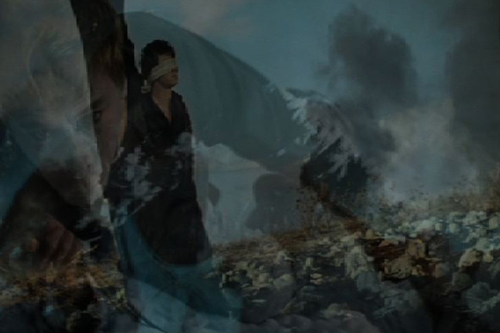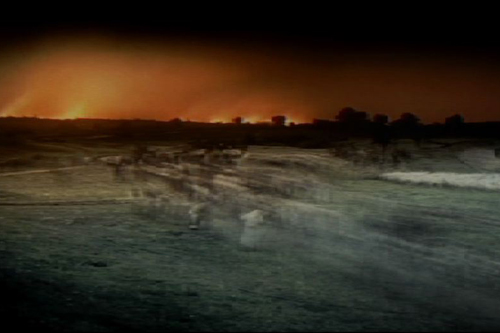1812 (ARCHIVE WORKS#06
War and Peace studies
1812 is an immersive audiovisual work entirely created and reworked from the classic Russian film War and Peace by Sergey Bondarchuk, from 1967, the work uses only and exclusively found footage and material from the film, and implodes it to create a new audiovisual work, a new visual sound experience. The result is an experimental vision that pretends to expand the way we perceive films and tries to push our notion of audiovisual sensations. Narration and plot lines are annihilated and imploded to become a sort of visual sound collage. 1812 wants to present a new vision and sound image of war, war and peace was hailed as presenting a new approach to war scenes and achieving a realism never achieved in film before, its use of 200.000 extras for the war scenes made of it the biggest production ever accomplished by man, a record that will never be broken again, in face of the new computer possibilities, war and peace was also a visual and sound experiment and its 5.1 sound mix became a standard in future productions and even its techniques were later to become standards and copied in Hollywood. War and Peace is surely the grand and boldest film production ever made. That is why I believe it is worth it to bring it back alive in a new shape, in a new vision, thru to its original intent, to transcribe the feeling of war and to bring alive the vision of Lev Tolstoy, the writer who best that any other writer would envision with its writing the cinematic visual language that will make cinema the means of expression of the next century, 1812 is the original title Tolstoy indented for his novel, that is why in an homage to his work too, I ve decided to call the project 1812, also a way to recall the 200 years span that separates us from the actual facts that were described in the book. 200 years that also provides a new reading of this work, in the context of Europe today.
1812 is composed by 4 parts
Peace ( prelude, polonaise, dance, epilogue)
The songs ( Andrei Song, Natascha Song, Napoleon Song, Pierre Song)
The seasons ( Summer, fall, winter, spring)
War ( Borodino, Schöngrabern, Austerlitz, Moscow)
"One of the things that fascinated me about this project is that I was working with the concrete material of the most expensive film ever made, money wise and human wise, the film with most people working on it, the greatest film ever made, and surely also the last, and I was to be confronted alone, me and it, alone without budget without any production or money, the film my computer and me…a solitude fight with the material. A sort of journey inside it, it was a sort of implosion. Imploded cinema. To also quote Youngblood. I am fascinated by some scenes some micro moments in the film and those moments are the ones that are building the whole scene…they create a grid where I construct the piece, some of the pieces are constructed out of few seconds in real time in the film, that is why the concept of implosion is so important, so defining of the work I am doing, I am imploding the film in itself. To recreate to create something totally new."
Excerpt from an interview with Yuri Dovronich soviet cinema critic interviews Carlos Casas, Tashkent 2011
Sottovoce Festival London 2011
Tashkent Biennale. 2011 (Best Video Work)



